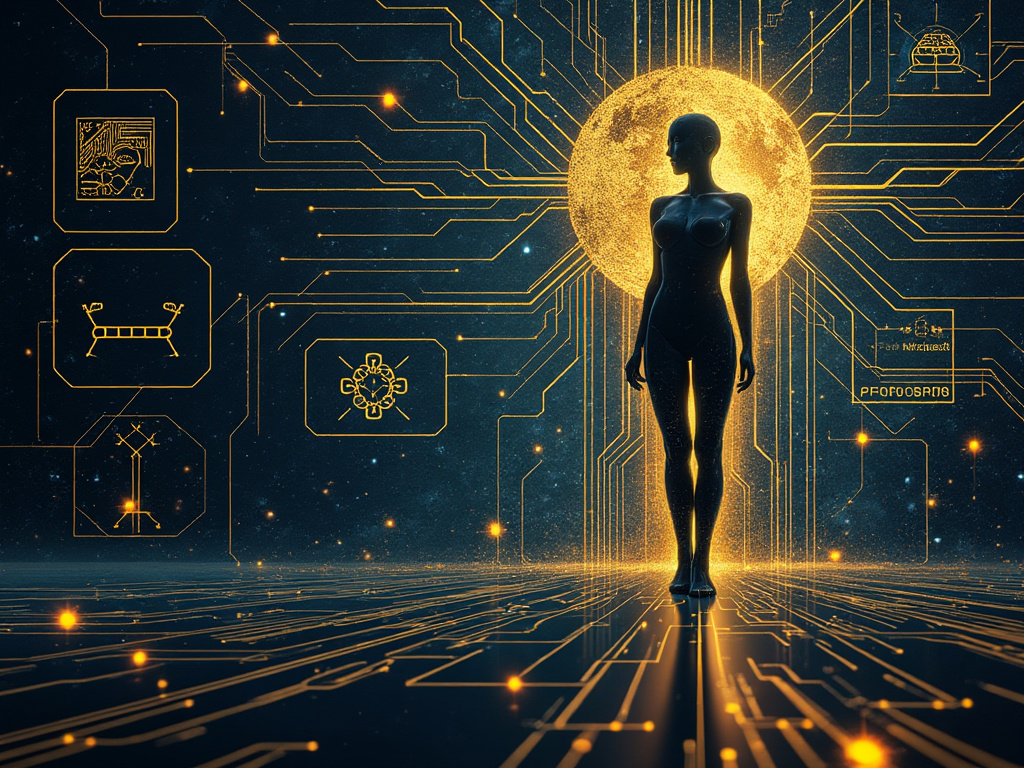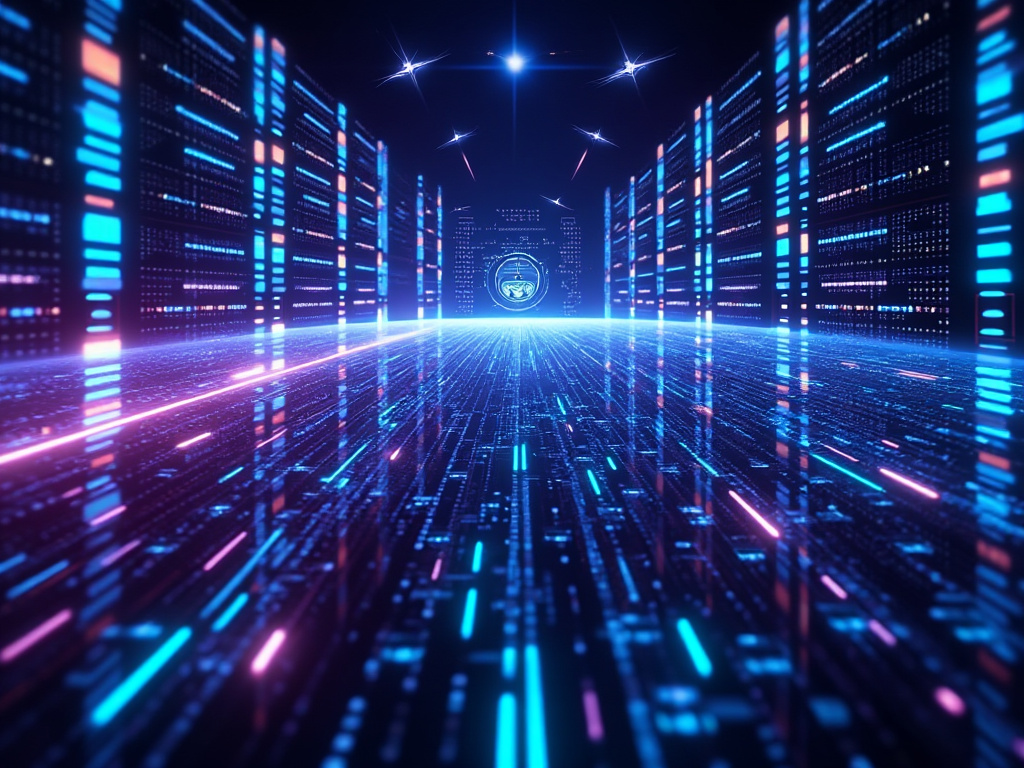Imagine a world where robots aren’t just cogs in the industrial machine, but artistic collaborators. A world where they can paint alongside humans, compose stirring symphonies, or even write captivating novels. This isn’t science fiction; it’s the dawning reality of Generative AI and robotics, a powerful fusion that’s poised to revolutionize everything from healthcare to entertainment.
A Rising Tide of Innovation
The field is experiencing an electrifying surge of interest. From academic institutions to tech giants, the investment in Generative AI and robotics is skyrocketing. This influx of resources fuels a wave of innovation as startups translate theoretical concepts into tangible applications. Venture capitalists, recognizing the transformative potential, are eager to join the tide. It’s a new era of groundbreaking possibilities.
The Engines of Creation: Generative AI
Generative AI acts as a catalyst for human creativity. It can conjure realistic images, compose captivating music, and even write lines of code. This magic is fueled by techniques like Generative Adversarial Networks (GANs) and Variational Autoencoders (VAEs).
GANs function like a creative sparring match between two neural networks. One, the “generator,” proposes ideas (images, music) while the other, the “critic,” evaluates their authenticity. This constant push and pull leads to stunningly realistic creations. Models like DALL-E, for instance, use this technique to generate captivating images based on simple text descriptions.
VAEs excel at unsupervised learning. They compress data into a condensed form, making them adept at anomaly detection, removing noise from data, and even generating entirely new samples. Another breakthrough is CLIP (Contrastive Language–Image Pretraining). This technology excels at cross-modal learning, allowing AI to understand the connections between words and images, fostering a deeper grasp of context and meaning. These advancements highlight the transformative power of Generative AI, pushing the boundaries of what machines can create and understand.
The Evolution of the Machine: Robotics
Robotics has come a long way since the days of Unimate, the first industrial robot. What were once rigid, single-purpose machines have evolved into collaborative partners known as cobots. In manufacturing, robots excel at assembling cars, packing goods, and welding with superhuman precision and speed.
The healthcare field has also witnessed the rise of surgical robots like the Da Vinci System. These marvels enable minimally invasive procedures with remarkable accuracy. This translates to quicker recovery times and less trauma for patients. Beyond surgery, robots play a vital role in telemedicine, facilitating remote diagnoses and patient care, expanding healthcare accessibility across vast distances.
The service industry hasn’t been left behind. Delivery drones, pioneered by companies like Amazon, promise swift and efficient deliveries, navigating complex urban environments to ensure timely arrivals. In warehouses, autonomous robots streamline logistics, tirelessly navigating shelves and fulfilling orders around the clock.
A Perfect Harmony: Generative AI and Robotics
The convergence of these two forces is driving groundbreaking advancements. A key innovation is “sim-to-real transfer,” where robots train extensively in computer-simulated environments before real-world deployment. OpenAI’s Dactyl robot, for example, learned to manipulate a Rubik’s Cube entirely through simulation. This approach accelerates development and translates to smoother real-world performance.
Generative AI also aids in data augmentation, creating synthetic training data to overcome the challenges of real-world data collection. Nvidia’s use of generative models to produce realistic datasets for autonomous vehicles exemplifies this. These models simulate diverse conditions, enriching the training process and leading to more robust and versatile AI systems.
The Symphony Takes Shape: Real-World Applications
The real-world applications of Generative AI in robotics demonstrate their transformative potential across various domains. Enhancing robotic dexterity, navigation, and industrial efficiency are just a few examples. Google’s research on robotic grasping involved training robots with simulation-generated data. This significantly improved their ability to handle diverse objects, making tasks like sorting and assembly more efficient.
Similarly, MIT’s CSAIL developed a system where drones leverage AI-generated data to navigate complex spaces, leading to increased reliability in real-world situations. In industrial settings, companies like BMW are using AI to optimize assembly line layouts and operations, achieving greater productivity and resource utilization.
The Future Symphony: Ongoing Research and Prospects
The future of Generative AI and robotics holds immense promise. Research in Reinforcement Learning (RL) is crucial, enabling robots to learn from their experiences and continually improve their performance. Few-shot learning, demonstrated by OpenAI’s GPT-3, allows robots to adapt rapidly to new tasks with minimal training data, potentially revolutionizing robotic training processes.
Hybrid models, combining generative and discriminative approaches, are being developed to enhance robotic systems’ robustness. Nvidia’s research on using GANs for realistic robot perception is a prime example. This allows robots to better analyze and respond to their environments, leading to more nuanced interactions with the world around them.
Challenges and Ethical Considerations
Despite the progress, integrating Generative AI and robotics comes with challenges and ethical considerations. Scalability remains a hurdle. Maintaining efficiency in complex environments with constantly changing variables requires further development. Additionally, the sheer amount of data needed to train these advanced models presents a challenge. Striking a balance between data quality and quantity is crucial for ensuring optimal performance.
Ethical concerns also need careful consideration. Biases present in training data can lead to biased outcomes in robot behavior. The potential for job displacement due to automation is another concern. To address these issues, it’s vital to develop equitable AI systems and strategies to mitigate potential negative impacts. This could involve retraining programs for displaced workers and creating new job opportunities in the evolving field of human-robot collaboration.
The Grand Finale: A Collaborative Future
The convergence of Generative AI and robotics is transforming industries and shaping our daily lives. Advancements in creative applications and industrial efficiency paint a picture of a future where human and machine capabilities are seamlessly intertwined. While challenges remain, ongoing research paves the way for equitable AI systems and a future where humans and robots collaborate harmoniously. As these technologies continue to evolve, the possibilities are truly boundless. Imagine robots composing alongside musicians, artists co-creating with AI, or even surgeons collaborating with intelligent robotic assistants. The future promises a symphony of human and machine intelligence, pushing the boundaries of creativity and innovation across all fields.

